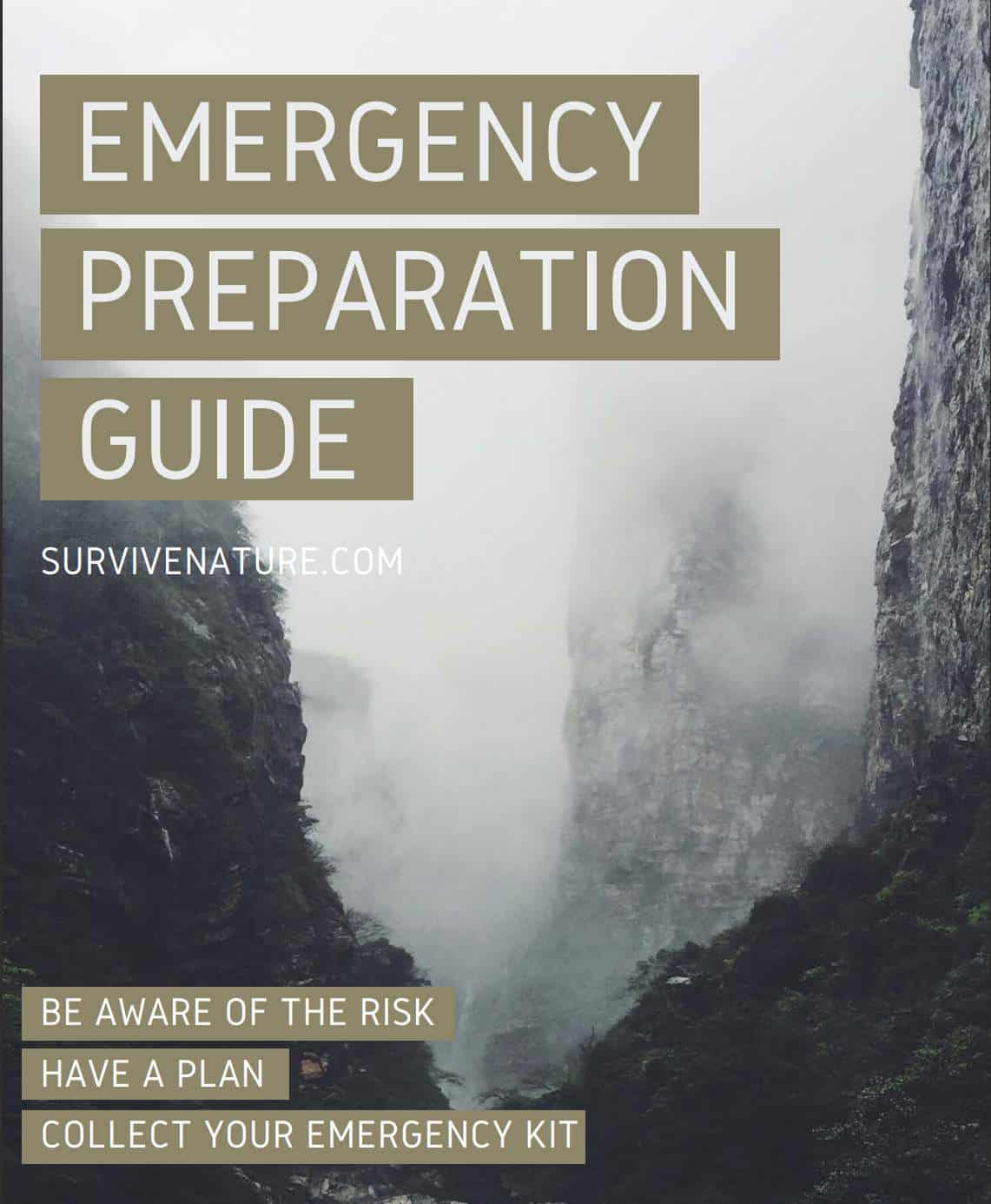A long time ago, when modern medicine didn’t exist yet, what did people use to heal injuries and sores? Mainly various fresh herbs and essential oils, from which they made salves with healing properties. And they really helped, because people knew very well which ingredients were needed for every occasion and in which proportions they should be mixed. Their medicine cabinet was a field or a forest. They knew which herbs helped stop bleeding, which ones aided in preventing infection, and which ones had anti-inflammatory properties. Nowadays, we can also use this ancient knowledge, but with more modern technologies such as the double-boiler method.
What is a Healing Salve?
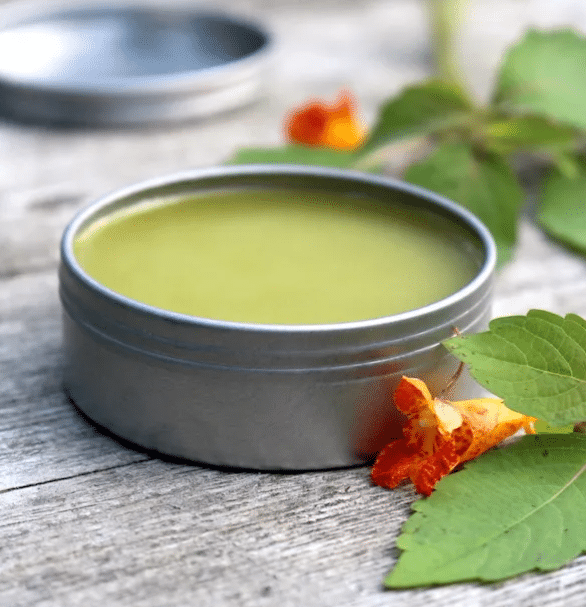
A healing salve is any substance that can be put on the skin to heal it — for example, a cream, ointment, or balm. The majority of natural healing salves in herbal medicine contain oils and waxes and thus are rather thick and even half-solid.
Many salve ingredients can be used for a variety of purposes. Salves are applied on lots of different occasions, for instance:
- Allergy to diapers;
- Chapped lips (a salve can be used as a lip balm);
- Dry skin;
- Muscle pain;
- Wounds;
- Lightly scraped, cut, or burned skin;
- Skin diseases such as eczema.
What Do You Need to Prepare a Salve?
The most necessary component in a herbal healing salve recipe is a carrier oil. There are many oils with different characteristics. Among the most popular ones, we can name such oils as:
Another necessary component is beeswax. It helps to solidify the salve and mix all components better. It can be substituted by carnauba or candelilla, although beeswax can be found much more easily. A solid block of beeswax cut to pieces is pictured in the photo above.
The recommended proportions are 1 ounce of beeswax and 8 ounces of oil. Unfortunately, it can be rather hard to measure the volume of beeswax pieces. So, if you’re having any troubles with it, here’s a tip for you: an ounce is approximately one tablespoon of beeswax pistils with a heap.
However, you don’t need to measure the ingredients too precisely. Moreover, it’s not necessary to strictly follow the recipe at all — you can increase or decrease the amount of beeswax, and it would be completely ok. If you’d like to make the mixture softer and more creamy, you may melt it again and pour some more infused oil into it. The main thing you should take into account is your personal preference.
In addition to those components, you’ll need many others. First of all, prepare all the necessary healing herbs and essential oils. You can use either dried herbs or fresh herbs, but with fresh ones, the shelf life of your salve will be shorter. Also, you may add cocoa butter to the mix. Secondly, you’ll need a pot for making it and jars to store it when it’s ready. Also, you should have a cheesecloth and a special heat-protected bowl.
How to Make a Salve? Step by Step Guide
Healing salves can be very different, but the technology of creating them is pretty much the same. Only contents like oils and herbs are different. So, it’s quite simple to make a salve, and when you’ve learned the main steps, you can keep creating more and more salves rather quickly. So, how to prepare a healing salve?
First of all, you’ll need an herbal infused oil. The most optimal way to do this is the so-called double boiler technology, also known as slow cooker infusion. Don’t do it in a single pot, because you can burn the herbs.
The double-boiler method is pretty simple. First of all, place the oil and the dried herbs in a little pot or any other container, such as a glass bowl. Put a big pot under it. A quarter of it should be filled with water.
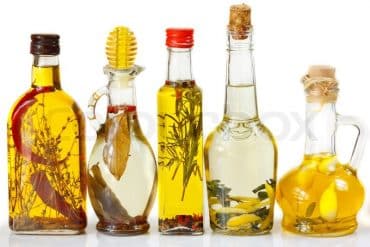
Also, there’s an alternative method named “solar infusion”. In it, you’ll need to pour the oil into Mason glass jars, place herbs there, close it, put into the direct heat of the sun, and leave for some time. This method is much less convenient than the double-boiler one. It requires constant sunny weather, and is simply longer — the infusion process takes a few weeks.
After that, you’ll need to strain the plant material out from the infused oil. Take a cheesecloth and place 2-3 layers of it over a container, tied with a rubber band. Pour the oil with herbs on it, and then tightly squeeze the cloth over the container to collect all the remaining oil.
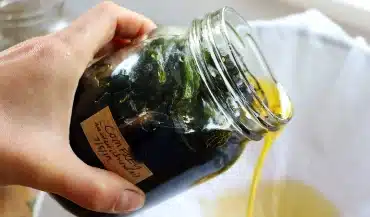
The next step is to add essential oil — of course, if it’s in the recipe. During this step, you may also put activated charcoal, clay, or other such things.
And finally, place all this mixture into jars, let it cool down, and store it. If you put the healing salve into the fridge for several minutes, you can make it thicker. The more beeswax you use, the more solid your healing salve will be. On the contrary, if you put less beeswax, the salve will be creamy or even half-liquid.
Which containers are the best for storing a healing salve? Some people prefer special salve tins since they’re very compact, convenient, and tightly closing. Another great variant is to use little Mason jars.
Oils and Herbs for a Healing Salve
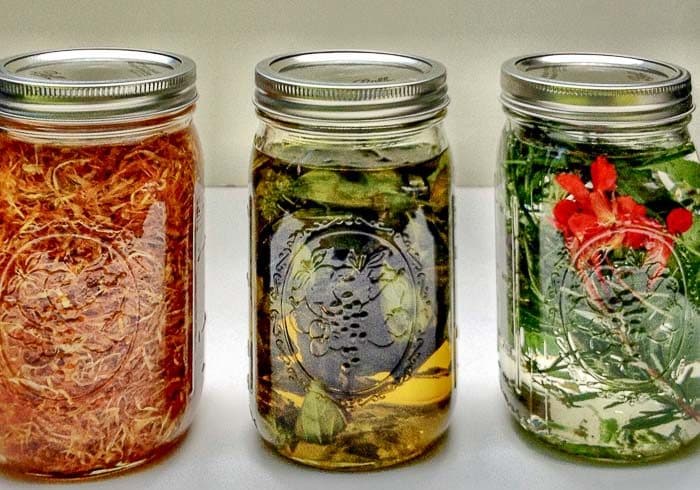
What are the most popular ingredients in healing salves? There are lots and lots of them. We’ll look only at a few herbs and oils.
Calendula
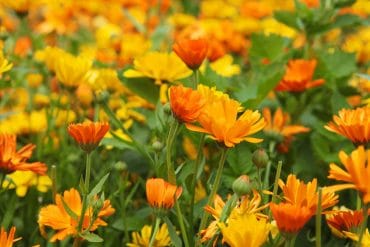
Orange flowers are more effective than yellow ones. The best varieties for a healing salve are Resina, Indian Prince, and Erfurter Orangefarbige.
Calendula flowers contain many chemicals that purify and soothe the skin, help get rid of sores and pains, stimulate the healing process and regulate body temperature. According to studies, it makes healing faster by 50%. Calendula contains triterpenoids that reduce inflammation, and many other useful chemicals — flavonoids, saponins, various polysaccharides, and micronutrients. Also, these flowers disinfect wounds and strengthen our immune system.
Chicory
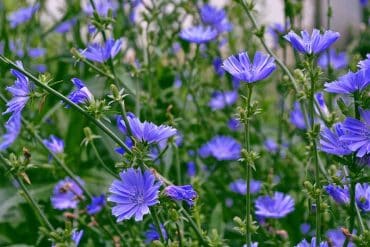
Dandelion
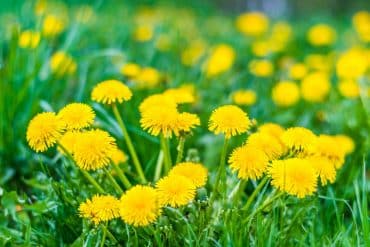
Yarrow
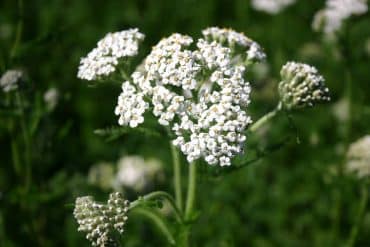
Plantain

Plantain has two main varieties: ribwort and broadleaf (also called common). Both of these herbs are very useful. A plantain salve can help cure inflammation, get rid of skin irritations, itching, and rashes, heal insect stings and bites. Its dried leaf is useful against skin cracks, scaldings, and burns. All these properties of plantain leaves have been known for centuries. This powerful skin healer was mentioned in a 17th-century herbal medicine book about and even by Shakespeare himself!
Comfrey
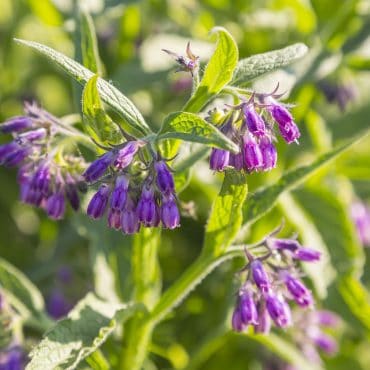
However, comfrey leaves are more harmless when used in salves and infused oils. In this case, it can’t cause any liver damage. Moreover, comfrey has strong healing properties and is rich in saponins, allantoin, polysaccharides, and many other useful chemicals. It can heal various types of skin and muscle damage, such as sprains, pulls, and bruises. So, we think that this plant shouldn’t be feared — it just needs to be used the right way.
Chickweed

Its health benefits are just as numerous. Chickweed is an antihistamine, a laxative, and a plaque-remover. But for herbal salves, its most important characteristic is the reduction of inflammation. So, if you add it to a herbal salve, it will be great for healing wounds and treating any kind of inflamed skin.
Wild violet
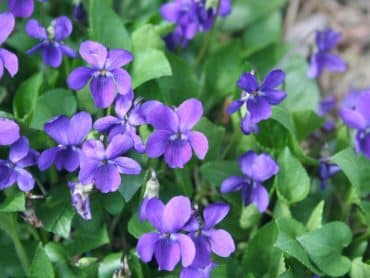
Purslane
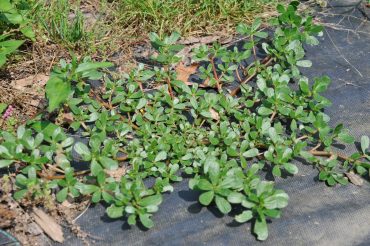
Lavender essential oil
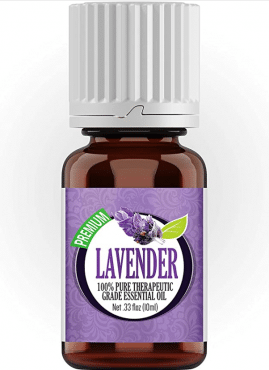
Jojoba oil
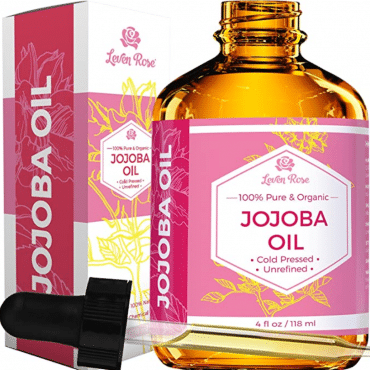
Healing Salve Recipes
Now, when we’ve told you some secrets of making your own salves, we’d like to share our favorite simple herbal salve recipes with you.
Multipurpose Skin Salve
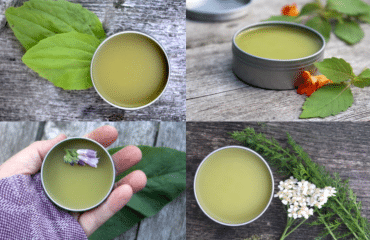
- 2 tablespoons of beeswax;
- 113 grams of calendula-infused oil;
- 25-50 drops of various essential oils, such as lavender, camomile, or frankincense.
Boo-Boo Healing Salve
Despite this salve’s silly name, it’s a very useful thing. It’s a much healthier and more natural substitute for various petroleum products such as neosporin. Like the previous entry, the Boo-Boo Healing Salve can be called a truly multipurpose one. It’s great for treating bruises, cuts, irritated skin, bug bites, bee stings, and ivy poisonings. Also, it’s good at healing or preventing diaper rash — but it’s better not to apply this salve on diapers made of cloth:
- Two cups of almond or olive oil;
- A quarter cup of beeswax;
- Plantain and comfrey leaves — 2 tablespoons each;
- Yarrow, calendula flowers and rosemary leaf (all of them should be dried) — 1 teaspoon each.
Salve for Stretch Marks
This herbal healing salve recipe is meant primarily for pregnant women who suffer from ugly stretch marks on their bellies. Don’t worry — it’s completely safe for the baby!
- Coconut oil and shea butter — a quarter of a cup each;
- A quarter teaspoon of dry ginger roots;
- 1 tablespoon of calendula flowers;
- 3 tablespoons oil of apricot kernels;
- Essential oils in case they’re allowed for pregnant women (optional).
Golden-Colored Herbal Salve
This salve contains three herbs that we’ve covered earlier in the article — comfrey, plantain, and calendula, and also sweet almond oil. Such a wonderful combination purifies, nourishes, soothes the skin, fights various skin irritations and damage. It helps get rid of itching, diminishes pain, protects the epidermis, and keeps the skin healthy.
- Comfrey, plantain, and calendula-infused sweet almond oil (one-third of a cup each);
- 28 grams of beeswax;
- A half teaspoon of rose geranium essential oil (isn’t necessary).
Pain-Soothing Salve
If your muscles are aching — for example, because of lifting something heavy — this herbal healing salve is truly irreplaceable for you. It contains cayenne pepper, which has both a warming and relaxing effect on muscles. Use it, and you won’t have to visit a medicine cabinet with your muscle pains!
- 1/4 cup of beeswax;
- 1 cup of coconut or olive oil;
- 1 tablespoon of arnica flowers;
- Turmeric, ginger root, and cayenne pepper powders — 1 tablespoon each.
Splinter-Drawing Salve
Because this salve contains activated charcoal, it has an unusual black color. It is very effective against many things — from glass or wooden splinters stuck in your skin to any kinds of skin tags and moles. Also, this salve is amazing at preventing infections. Let us consider the contents:
- Beeswax, coconut oil, kaolin clay, and activated charcoal (in powder) — 2 tablespoons each;
- 3 tablespoons of olive oil infused with plantain, calendula, and comfrey;
- 1 tablespoon of honey;
- 2 teaspoons of shea butter;
- 25 or more drops of essential oil — the best variants are camomile and lavender.
Summertime Healing Salve
Who doesn’t love summer? For many people, it’s the greatest time of the whole year. It’s warm, sunny, green, there are lots of flowers everywhere… But also, summer has quite nasty things like insect stings and bites, poison ivy, sunburns, and occasional nettle rash. Luckily, there’s a solution for this all — a special summertime healing salve recipe that will ease those problems and let you have a happy summer! The contents are as follows:
- 2 cups of any oil (for example, almond, coconut, or olive oil);
- A quarter or a half cup of wax;
- Plantain and comfrey leaves and burdock root — 2 tablespoons each;
- 20 drops of lavender essential oil (not necessary).
Conclusion
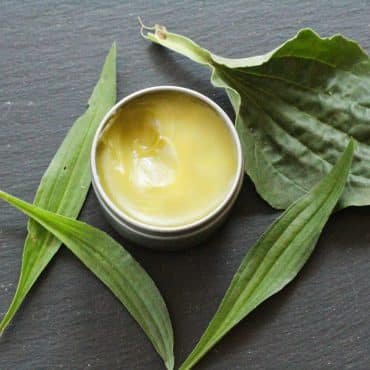
Frequently Asked Questions — FAQ
What is the main use of a healing salve?
Healing salves can be used for different purposes — for instance, to reduce inflammation, to calm and hydrate the skin, to heal insect stings, and so on. Mainly, the uses are connected to various skin and muscle problems.
What is the best healing salve?
It depends on the problem. There are different salves for different situations — for instance, a soothing salve or a salve for wound healing. Moreover, what helps one person may not be so effective for another, so the best way is to figure out for yourself what works personally for you. But we would recommend the salves that are listed in the article. Many people consider them really effective and helpful.
How do you prepare healing salve herbs?
To prepare herbs (flowers, leaves, etc.) for a healing salve, you should dry them (fresh herbs may shorten their shelf life) and make an oil infusion with them. There are several ways of infusion, but the quickest and most convenient of them is the double-boiler method, which is described above.
Are healing salves a good treatment?
A properly-made herbal healing salve can be both very effective and non-toxic. Because slaves are completely natural and DIY, many people trust them more than pharmacy creams. But to make a herbal salve really good, you should know very well which ingredients to put there and in what doses.
How to prepare an herbal tincture?
An herbal tincture is a plant extract in ethanol. It’s completely different from a salve, but the process of making it has some similarities. For example, it also has infusion and straining stages, and it’s quite easy too. But of course, it’s a topic for a separate article, not for a short question.


